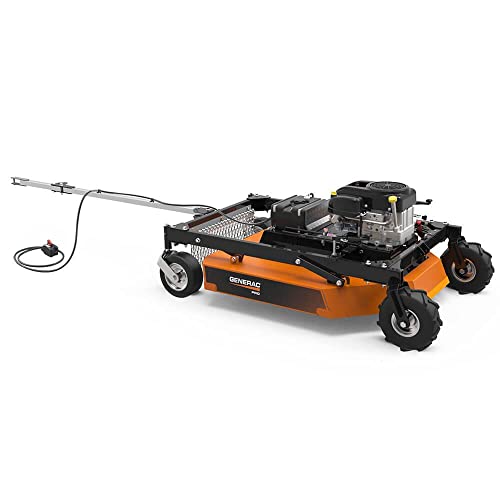It’s not just landscapers who love trees and brushes. Everyone loves brush and small trees. They add beauty, shade, privacy, and even wildlife habitat to our homes. But sometimes brush and trees get in the way of building projects.
Sometimes we build new houses with trees already planted. Other times, we have to clear brush and small trees from the land before we can build. In either case, clearing trees can be a hassle.
In this article I’ll share my top tips for how to clear brush and small trees from your land. I’ll also cover how to remove small trees, brush, and other items without damaging the root system.
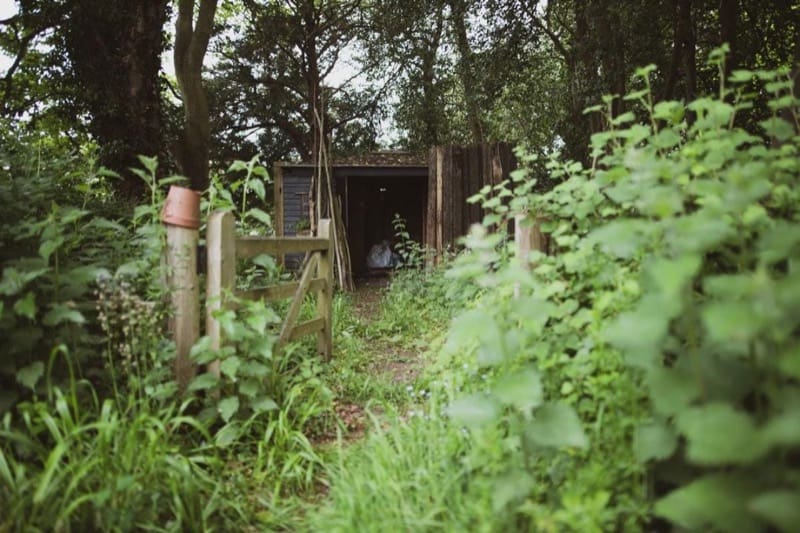
Tools to Clear Brush and Small Trees
If you’re planning to clear brush and small tree branches off your overgrown land, there are some tools that will make the job easier.
You don’t need all the lawn and gardening tools, so it’s best to go through the list of tools to better understand
Here is a list of equipment that may be needed for clearing an overgrown yard.
1. Axes and Hatchets
A good axe and small hatchet can help you clear out land. You can use them to cut down small trees and leave stumps behind to decompose.
2. Brush Mower
A brush mower, also known as a brush hog, is an important tool for clearing brush and small trees on larger properties. It has two cutting blades at the front and one at the back. The blades are designed to cut through thick brush and leaves.
A walk behind brush hog is self-propelled and clears brush and small trees. It comes in tow behind style for rougher terrain like fields and woods.
Brush hogs make brush clearing easy. But one word of caution, they are also powerful and potentially dangerous pieces of equipment. Always check the owners manual before operating them.
3. Brush Grubber
The brush grubber is another useful piece of equipment for clearing brush. This machine digs into the ground and pulls up roots and brush.
When removing trees and their roots, it can leavea. hole in the ground. Make sure to fill up the hole left by the roots.
It’s great for removing large amounts of brush and small trees quickly.
4. Chainsaw
Chainsaws are used to cut down trees. You should always follow safety precautions when using them and only after learning how to properly use it. Don’t use a chainsaw if you’re not sure about how to operate it.
Be sure to use proper techniques to cut down trees and have them fall in the direction that you want them to fall in.
Cutting down a tree is a dangerous job because you need to cut the tree into smaller pieces before you can remove them. You could get hurt if the tree falls on you while you’re cutting it up.
5. Spade or Shovel
Small trees may look skinny and easily pulled out, but their roots maybe be well-established and hard to get rid of. You may need a spade to dig up the base of shrubs and bushes that a brush grubber won’t do the job on.
A spade is useful to loosen the soil around the roots of plants and allow you to pull them out easily. A shovel is also be useful for digging holes for planting trees and shrubs, as well as filling holes left by pulling out small trees.
6. String Trimmer
Don’t confuse the weed eater with the hedge trimmer! Weed eaters are great for clearing up thin weeds and grasses. But if you want to clear thick bushes or shrubs, you need a different tool.
A string trimmer is what you need because it’s more heavy-duty and is thicker. It’s also known as a brush cutter and comes with a long rotating blade that cuts through branches and foliage.
A brush clearing string trimmer should be chosen based on what kind of work you want done. If you’re going to clear brush for a large area, then the self-propelled model is better suited for the job. If you’re going over a smaller area, then the hand-operated model will work well enough.
String trimmers are tools used to cut grass, weeds, and other vegetation. They are made to work with different attachments. There are some attachments that are designed to cut woody shrubs and bushes, while others are blades that can cut down smaller trees.
7. Stump Grinder
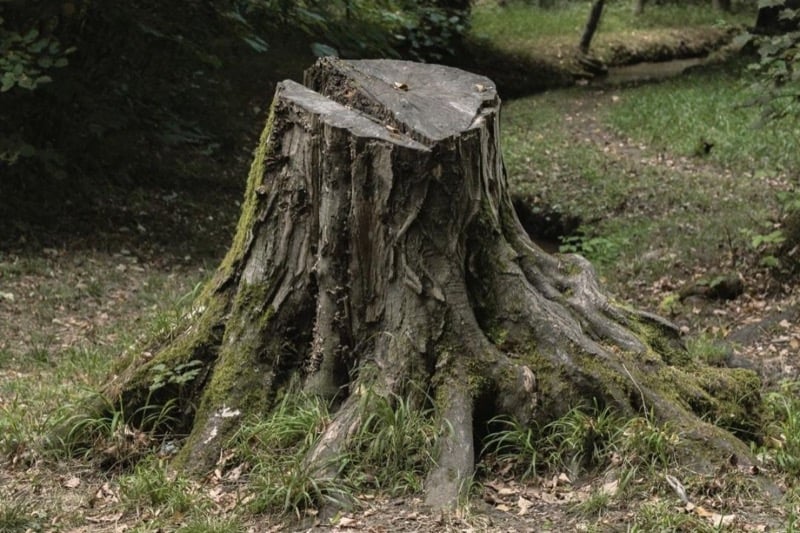
Stump grinders are used to clear stumps out of the earth that are too large to dig out or burn out.
A stump grinder is a machine used to remove stumps from land. It works by cutting into the stump and removing the woody material.
There are different types of stump grinders:
- Handlebar Stump Grinder – The smallest type of grinder that’s handheld. You need to manually push it into stumps.
- Tow-Behind Stump Grinders – These are more powerful, but require more effort to use because you need to attach them to your tractor, truck, or ATV. They are used to pull the stump grinder.
- Riding Stump Grinders – This is the most popular type of stump grinder as you can ride on it. Riding stump grinders are about the size of a small tractor.
- Skid Stump Grinders – These are also driven from the top or behind. They have tracks like what a tank has to help prevent skidding on soft and wet ground.
- Skid Steer Attachment Grinder – These are attachments to a skid steer and are controlled by the same arms as the bucket.
Stump grinders can be bought from your local hardware store or gardening supply shop. Renting a stump grinder is cheaper than buying one if it’s just one project. A smaller stump grinder is better suited for smaller jobs.
Stump grinders available for rent by homeowners are usually less powerful than those used in a commercial stump grinding service because they are designed for smaller stumps.
You may want to consider hiring a professional because removing stumps can be dangerous with all the heavy machinery.
If your stump is near a building or another structure, it may also be good to hire a professional, so you don’t ruin the foundation or the structure itself.
Rotting out the stump could also be an option, but it would take longer and require more effort.
8. Rotary Cutter
The rotary cutter is a tool used to cut through thick plants such as brambles, hedges, and even tree limbs.
It is a very useful tool when clearing land. It cuts through everything quickly and easily without damaging any surrounding areas.
It comes in many sizes and shapes depending on what you need to cut. Some rotary cutters come with a blade attached that spins at high speeds to make quick work of the plant matter.
Others have a blade that is stationary and the user moves the device over the plant matter.
9. Root Grapple
A root grapple helps you pick up and transport all the branches, trees and brush you cut down easily. You can load them into the truck, or your utility vehicle, or even a trailer hooked to either.
Or drive the tractor directly to a dumpsite with a load held in the teeth of the grapple to eliminate the need for an extra piece of equipment.
The Remaining Tools and Materials
Here are some other hand tools that may be useful in clearing brush and small trees:
- Bow Saw
- Pruning Shears
- Rake
- Tree Pruner
- Trash Bags
- Topsoil
Also, don’t forget your safety equipment: long sleeves, pants, gloves, helmets, ear plugs, and safety glasses.
Steps to Clear Brush and Small Trees Overview
Once you have your equipment ready, it’s time to start clearing your land. Here are the steps you will need to complete to get started:
- Walk and Mark the Land
- Plan for Debris Removal
- Cut the Trees Down
- Remove the Stumps
- Clear the Shrubs
- Clear the Undergrowth
- Remove the Debris
- Enjoy Your Yard!
1. Walk and Mark the Land
You need to bring a notebook and some markers to make sure you know what you’re dealing with. Mark any areas that may cause problems.
Mark the trees and stumps with paint or flags, so you don’t lose track of them. Draw out your map and action plan to guide you. Don’t get lost in the middle of clearning the brush and trees.
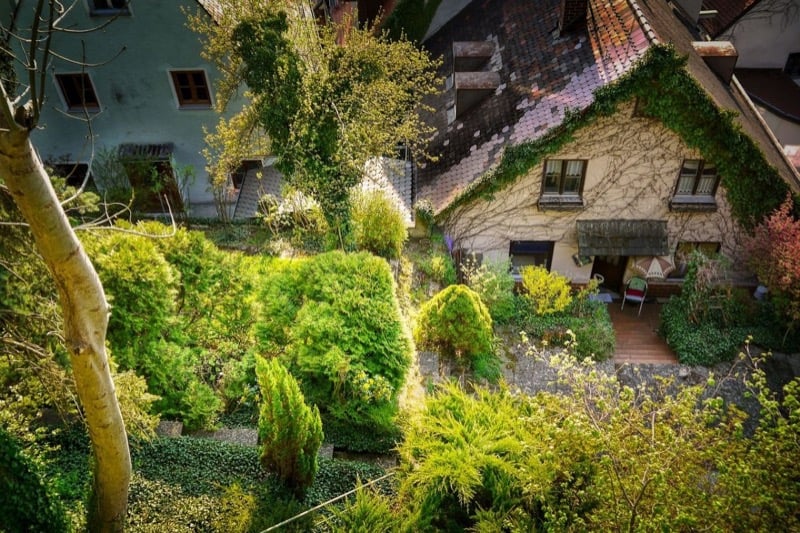
2. Plan for Debris Removal
Make sure you plan ahead of time where you’ll place the debris. There should be enough room for the debris to fall away from the house and driveway.
You should rent a yard waste container if you want to dispose of large amounts of garbage. Otherwise, you can put everything into the regular trash bin.
For smaller projects, you may be able to use your regular city trash removal. You can also coordinate with your neighbors to help each other out. Or you may be able to put them on the sidewalk if your local trash removal will remove them.
Composting is an eco-friendly method of recycling organic waste into fertilizer for your garden and lawn. You can use this technique to recycle any kind of organic material, including paper, cardboard, wood, weeds, and yard trimmings.
3. Cut the Trees Down
After marking the trees you want to cut down using your chainsaw or axe, bring them to the ground and cut them into smaller pieces.
Then return to each stump and prepare it for grinding by cutting it as close to the ground as possible.
4. Remove the Stumps
Stump grinding is an important part of landscaping. You should be careful when using this tool. If you have roots still in the ground, you can leave them alone to decompose naturally in the ground. Cover the root area with sawdust and topsoil to allow the roots to decompose.
Don’t forget that you have the grubber in your toolbox. It’s safer than using a grater and pulls the whole stump along with its roots out of the ground. Fill the hole in with the soil you brought, and you’re done. The grubber is designed for small trees and stumps.
5. Clear the Shrubs
A brush mower is an excellent tool for clearing brush and shrubbery. You should buy a brush mower if you want to get rid of overgrown bushes and trees. A brush mower makes it easy to cut down bushes and trees.
Brush grubs are easy to remove by using a brush grub remover. For established and woodier brushes, you can always use the jaw of a brush grubber to pull them out of the ground with easy.
6. Clear the Undergrowth
You should remove the trees and heavy brush first before getting down to the weeds. Vines and brambles are difficult to cut down because they grow thickly and fast. Use your tree pruner to trim them down.
String trimmers are used to remove undergrowth. They are designed to be heavy-duty and efficient. A string trimmer is ideal for cutting thicker vegetation, such as bushes or tall grass.
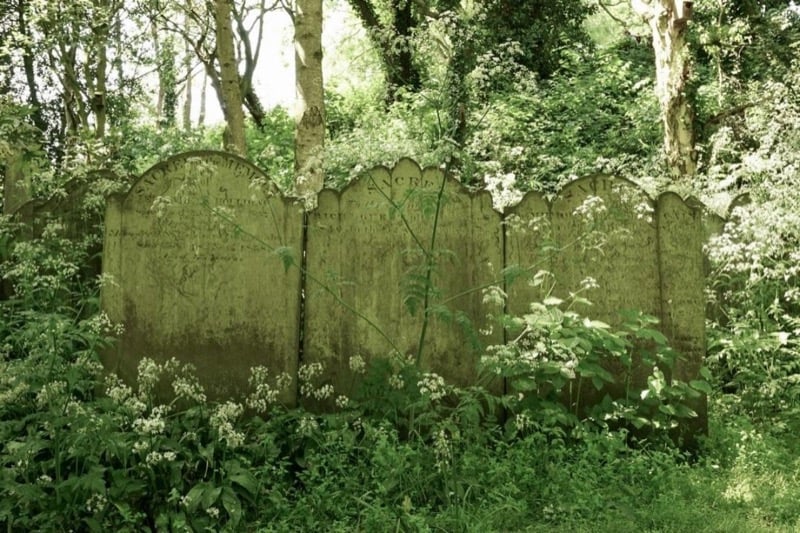
7. Remove the Debris
Once all the trees have been removed, you can start removing the debris. This includes rocks, logs, branches, and leaves.
Use a rake to gather loose debris. Then, use your shovel to fill holes in the ground. You can use a wheelbarrow to more easily transport the debris away from where you cleared.
If you’re going to compost some of the yard trimmings, make sure not to put any poisonous plants in the (poison ivy, poison oak, or sumac) compost pile.
8. Enjoy Your Yard!
Your work is finished, but your job isn’t over yet! Take a moment to enjoy what you’ve accomplished. Now that you’re done, take an after photo to compare how much better your house looks now than when you started.
Clear Brush and Small Trees Final Thoughts
Now that you know how to clear brush and small trees, you’ll never have to worry about having to clean up the mess again.
Remember to practice safe techniques while working in your yard. Wear protective gear like gloves, safety glasses, and ear protection. Also, make sure to wear shoes that won’t slip on wet surfaces.
To help prevent injury, don’t try to tackle big jobs without proper training.
Land clearing is an important part of gardening. Clearing land allows you to plant new plants and make room for them. You can also use this time to weed out unwanted plants.
Other articles that you might be interested in:

